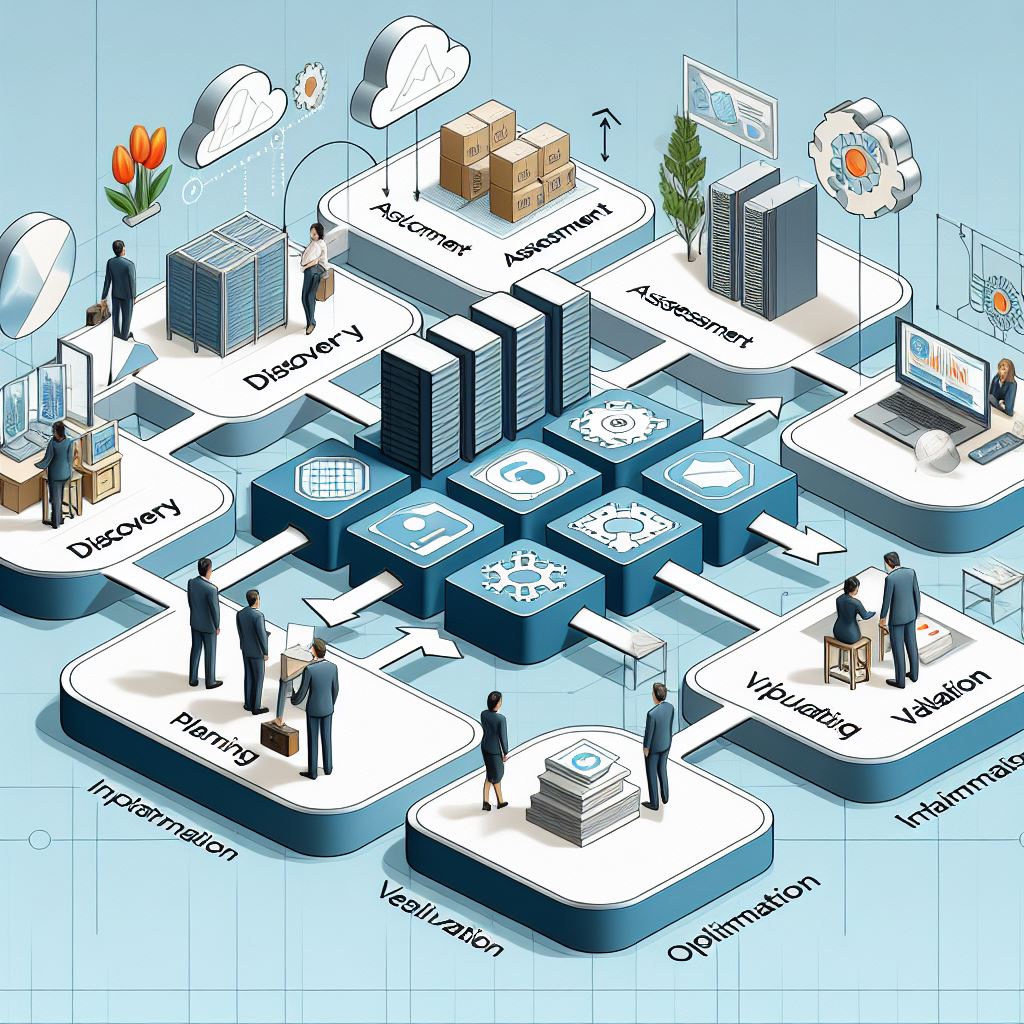In today’s digital age, businesses are increasingly looking to migrate their data centers to the cloud in order to improve efficiency, flexibility, and scalability. However, executing a successful data center migration to the cloud requires careful planning and execution. A comprehensive project plan is essential to ensure a smooth and successful migration process.
In this article, we will explore some tips for creating a data center migration to the cloud project plan. From conducting a thorough assessment of current infrastructure to creating a timeline and budget, there are several key considerations that organizations need to take into account when planning a migration to the cloud. By following these tips, businesses can mitigate risks and ensure a successful transition to the cloud.
Contents
- 1 What is data center migration?
- 2 Best practices for data center migration
- 3 Steps for a successful data center migration project
- 4 Key considerations for migrating to the cloud
- 5 Common cloud migration challenges and how to overcome them
- 6 Frequently Asked Questions [FAQs]
- 6.1 Q: What are the best practices for data center migration to the cloud?
- 6.2 Q: What tools can be used for data center migration to the cloud?
- 6.3 Q: What should be included in a data center migration project plan?
- 6.4 Q: How do you migrate data to the cloud?
- 6.5 Q: What are the key steps in a successful data center migration?
- 6.6 Q: What are the challenges of data center migration to the cloud?
- 6.7 Q: What does it mean to migrate data to the cloud?
- 6.8 Q: How do you create a comprehensive data center migration plan?
- 6.9 Q: What are the essential components of a data center migration strategy?
- 6.10 Q: What considerations should be part of the migration journey to a new data center?
- 7 Conclusion
What is data center migration?

Understanding the concept of data center migration
Data center migration refers to the process of moving data, applications, and other business elements from an existing data center to a new data center or a cloud environment. It involves transferring workloads and infrastructure to a different location or platform to achieve various business objectives.
Factors driving the need for data center migration
Several factors may drive the need for data center migration. These include the need for scalability, cost-efficiency, improved performance, and enhanced security. Organizations often migrate their data centers to adapt to evolving technology landscapes and to meet changing business requirements.
Key benefits of migrating to the cloud
Migrating to the cloud offers several key benefits, including reduced infrastructure costs, increased flexibility, enhanced security, and improved accessibility. By leveraging cloud services, businesses can streamline operations and focus on innovation rather than managing physical infrastructure.
Best practices for data center migration

Creating a comprehensive migration plan
A comprehensive migration plan should include a detailed inventory of assets, a risk assessment, and a timeline for the migration process. It is essential to involve key stakeholders and define clear objectives to ensure a smooth and successful migration.
Choosing the right migration tools
Selecting the appropriate migration tools is crucial for a successful migration process. It is important to evaluate the capabilities of the tools and ensure they align with the specific requirements of the migration project.
Addressing common migration challenges
Common migration challenges such as data loss, downtime, and application compatibility issues should be identified and mitigated in the migration plan. Strategies for data protection and business continuity should be integrated into the migration process.
Steps for a successful data center migration project

Assessing the current data center environment
Prior to migration, a comprehensive assessment of the current data center environment is necessary to understand the existing infrastructure, data storage, and application dependencies. This assessment provides valuable insights for developing a migration strategy.
Developing a migration strategy
A well-defined migration strategy should outline the approach for moving data and applications, mapping out dependencies, and identifying potential risks. It should also define the roles and responsibilities of team members involved in the migration process.
Implementing the migration plan
The execution phase involves following the migration plan and executing the migration according to the defined timeline. Regular communication and coordination among team members are essential to ensure a seamless and successful migration process.
Key considerations for migrating to the cloud

Understanding the differences between on-premises and cloud environments
It is crucial to understand the fundamental differences between on-premises and cloud environments, including security protocols, networking infrastructure, and data storage mechanisms. This understanding informs the migration approach and ensures a smooth transition to the cloud.
Ensuring data security during the migration process
Data security should be a top priority throughout the migration process. Encryption, access controls, and data integrity measures should be integrated into the migration plan to safeguard sensitive business information during the transition.
Selecting the right cloud migration service
The selection of a suitable cloud migration service is critical for the success of the migration project. Factors such as service reliability, performance, and support should be carefully evaluated when choosing a cloud provider for the migration.
Common cloud migration challenges and how to overcome them

Addressing application migration complexities
Migrating complex applications to the cloud requires careful planning and testing to ensure seamless functionality. Compatibility issues, performance optimization, and data dependencies should be thoroughly addressed during the migration process.
Managing data from one environment to another
The seamless transfer of data from the existing environment to the cloud is a critical aspect of data center migration. Data integrity, validation, and efficient transfer mechanisms are essential for a successful data migration process.
Ensuring business continuity throughout the migration
Business continuity measures, including contingency plans and failover mechanisms, should be established to mitigate any potential disruptions during the migration process. Minimizing downtime and maintaining operational resilience are key objectives for a successful migration.
Frequently Asked Questions [FAQs]
Q: What are the best practices for data center migration to the cloud?
The best practices for data center migration to the cloud include thorough planning, assessing current workloads, choosing the right cloud provider, establishing a migration strategy, and testing the migration process extensively.
Q: What tools can be used for data center migration to the cloud?
There are various tools available for data center migration to the cloud, such as AWS Server Migration Service, Azure Migrate, Google Cloud’s Migrate for Anthos, and Carbonite Migrate, among others.
Q: What should be included in a data center migration project plan?
A comprehensive data center migration project plan should include an assessment of the current infrastructure, a timeline for the migration process, risk assessment and mitigation strategies, communication plans, and post-migration monitoring and optimization.
Q: How do you migrate data to the cloud?
Migrating data to the cloud involves several steps, including data assessment and classification, choosing the appropriate migration method (lift and shift, re-platforming, or re-architecting), executing the migration plan, and verifying data integrity post-migration.
Q: What are the key steps in a successful data center migration?
The key steps in a successful data center migration include thorough planning, assessing dependencies and interconnections, establishing clear communication channels, meticulous testing, and continuous monitoring and optimization post-migration.
Q: What are the challenges of data center migration to the cloud?
Some of the challenges of data center migration to the cloud include complex data dependencies, potential data security risks, application compatibility issues, performance concerns, and the need for skilled personnel to manage the migration process.
Q: What does it mean to migrate data to the cloud?
Migrating data to the cloud refers to the process of transferring data, applications, and other business elements from an on-premises data center to a cloud environment, often with the aim of leveraging cloud benefits such as scalability, flexibility, and cost-efficiency.
Q: How do you create a comprehensive data center migration plan?
Creating a comprehensive data center migration plan involves identifying critical data and applications, assessing security and compliance requirements, establishing a detailed timeline and communication strategy, and ensuring that all stakeholders are aligned with the migration objectives.
Q: What are the essential components of a data center migration strategy?
An effective data center migration strategy should encompass a risk assessment and mitigation plan, a detailed inventory of existing infrastructure and workloads, a clear decision-making framework, a robust testing approach, and a contingency plan for unexpected issues.
Q: What considerations should be part of the migration journey to a new data center?
As part of the migration journey to a new data center, considerations should include evaluating the readiness of existing infrastructure for migration, conducting impact assessments, defining success criteria, establishing post-migration support processes, and documenting lessons learned for future migrations.
Conclusion
Migrating your data center to the cloud is a significant project that requires careful planning and execution. By following the tips outlined in this article, you can ensure a smoother transition that minimizes downtime and maximizes efficiency. Remember, the journey to the cloud is not a sprint but a marathon. It’s about optimizing your operations in the long term, enhancing the flexibility of your infrastructure, and driving innovation in your business. So, whether you’re just beginning to consider a move to the cloud or already planning your migration, these tips can serve as a valuable guide. Ready to embark on your cloud migration journey?





